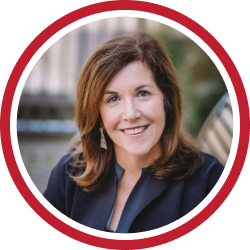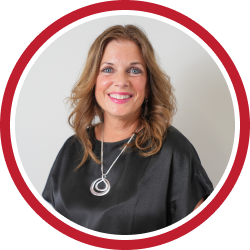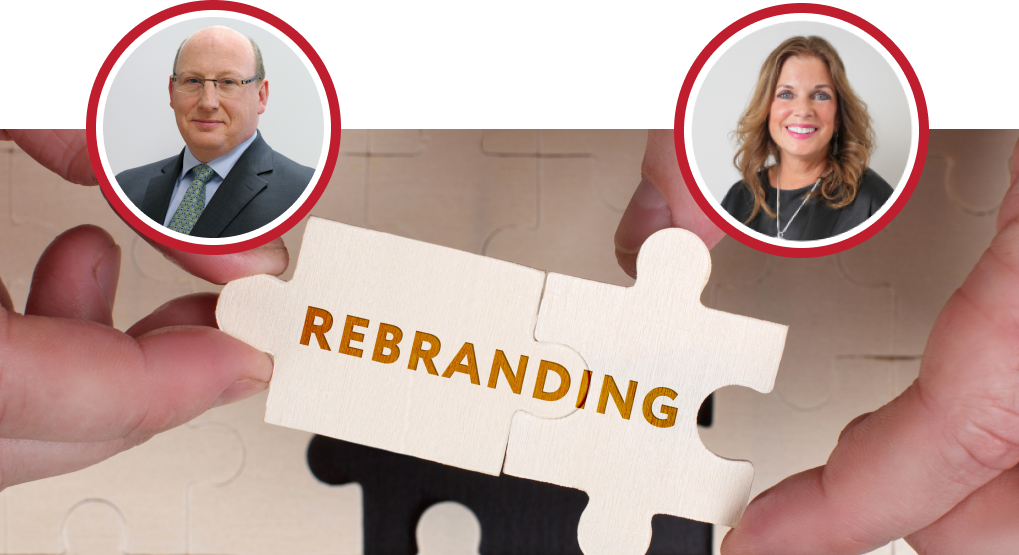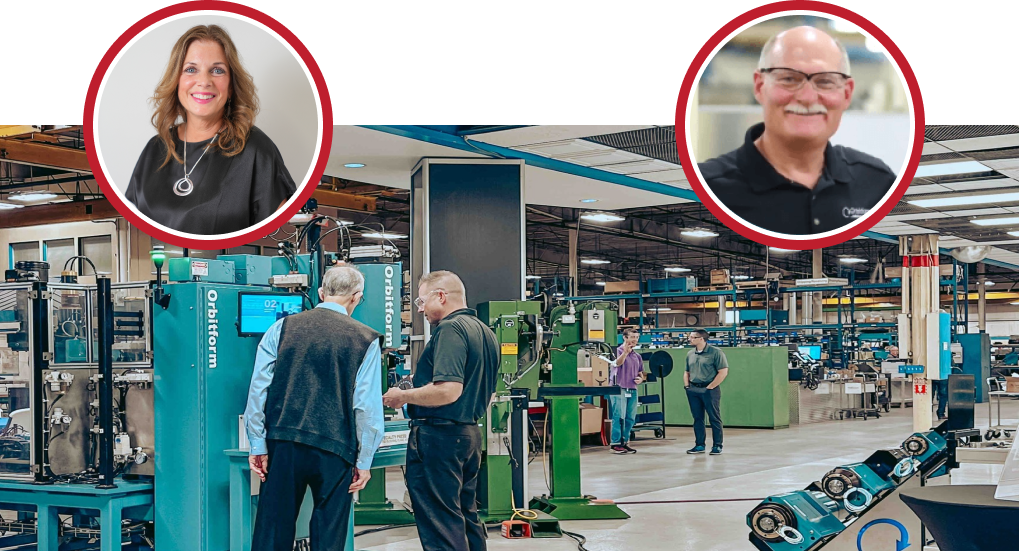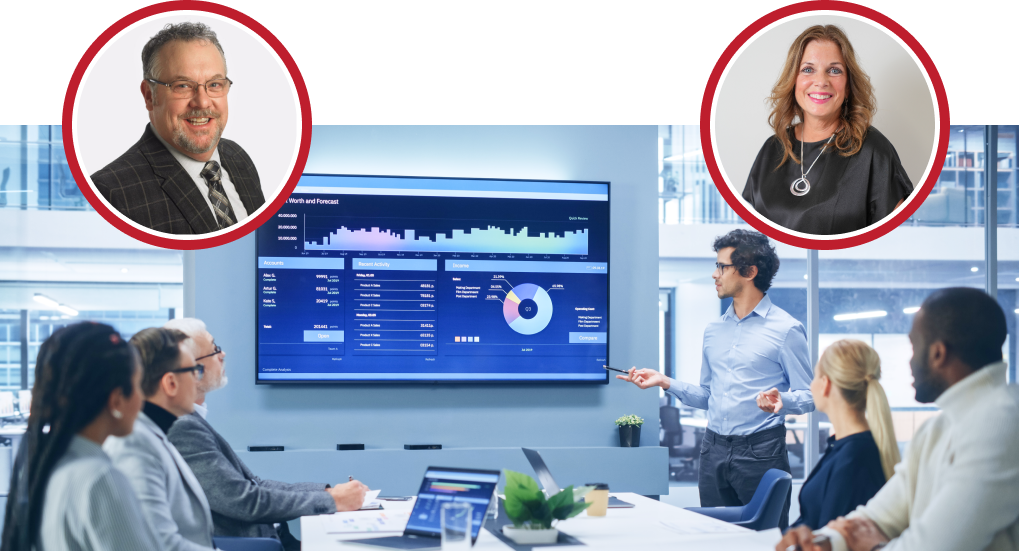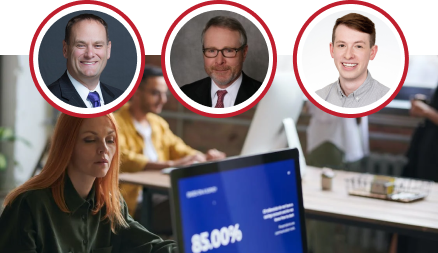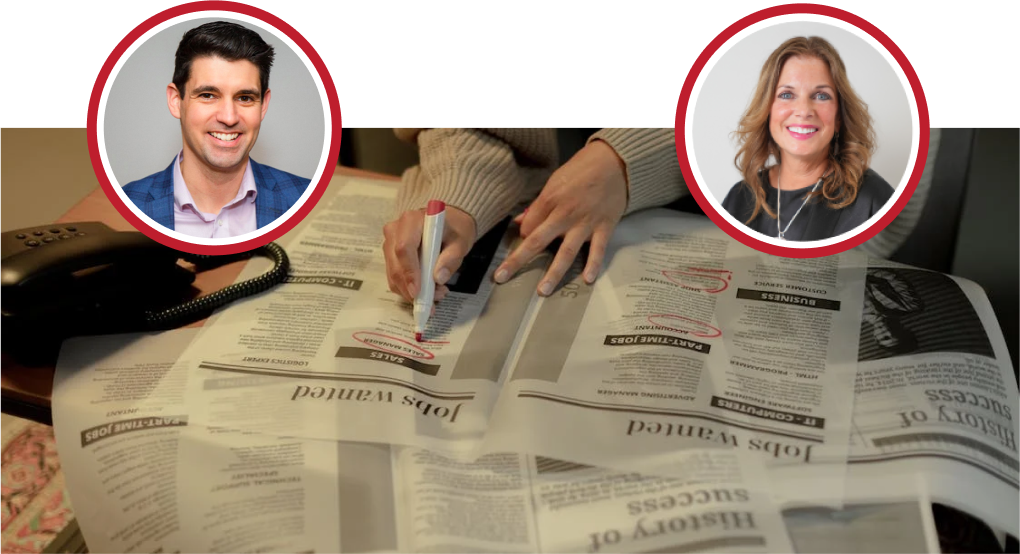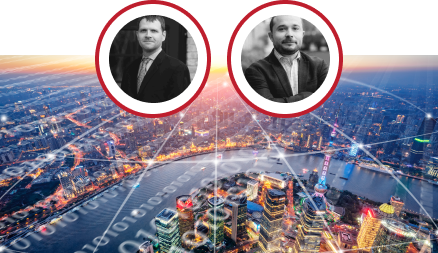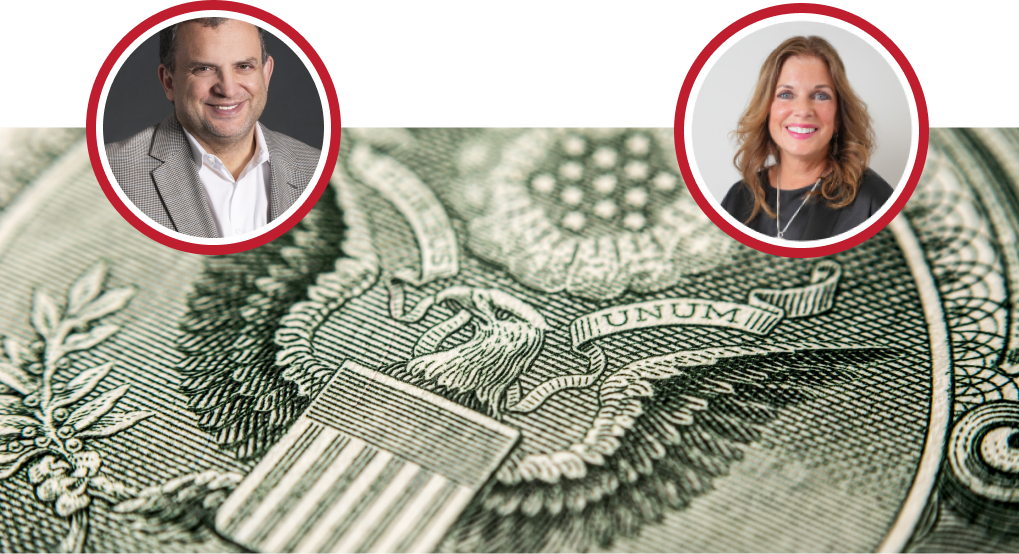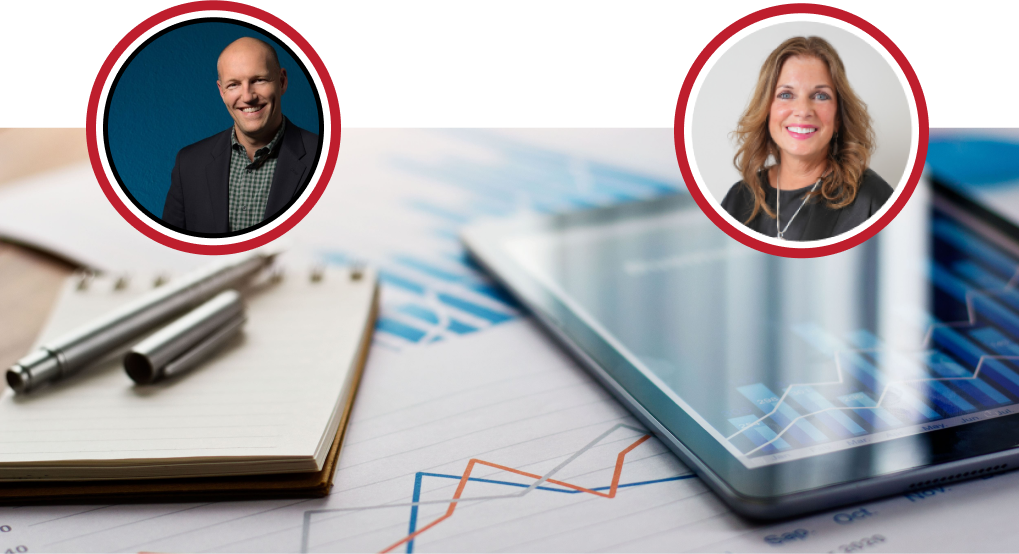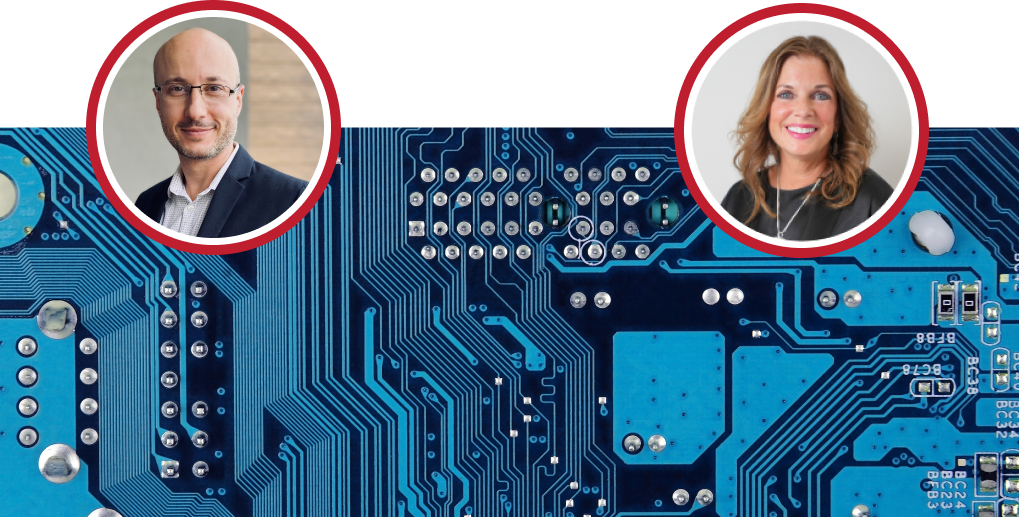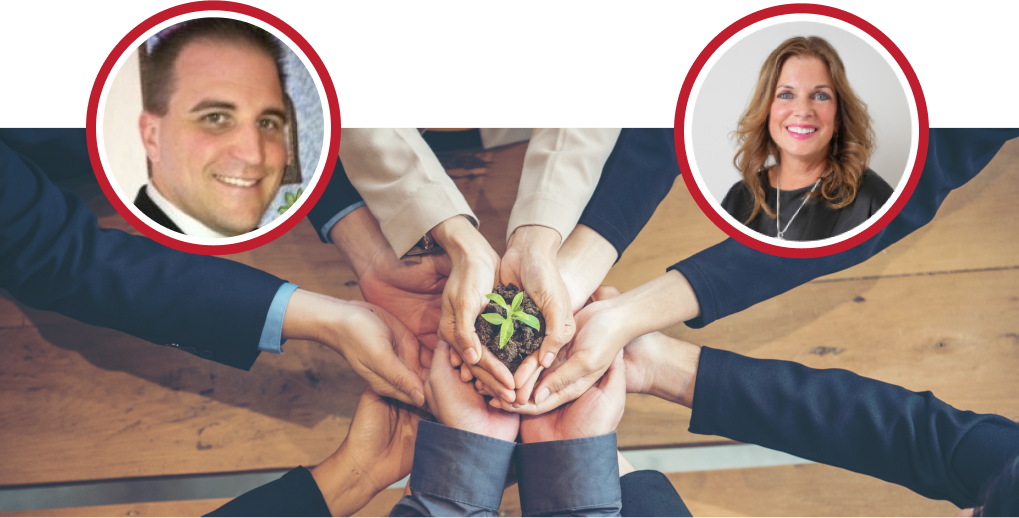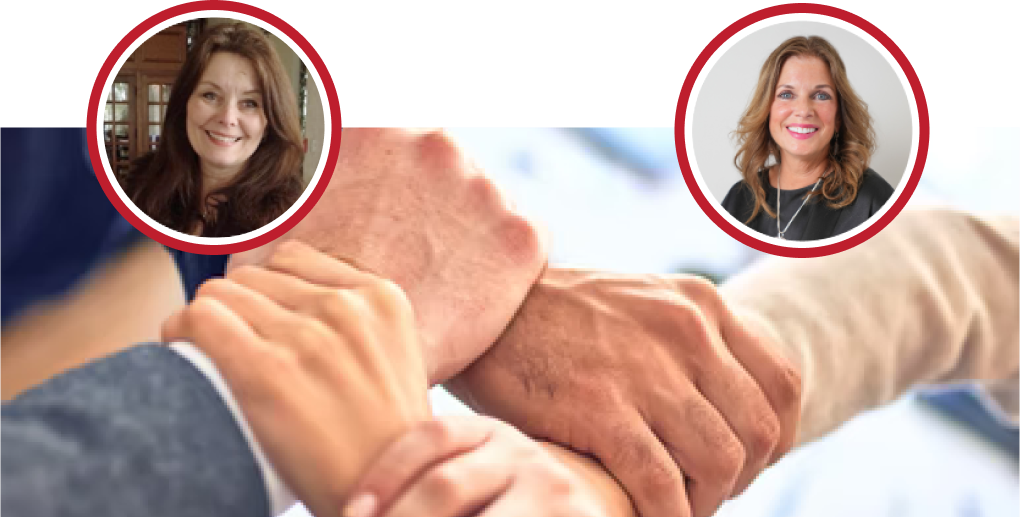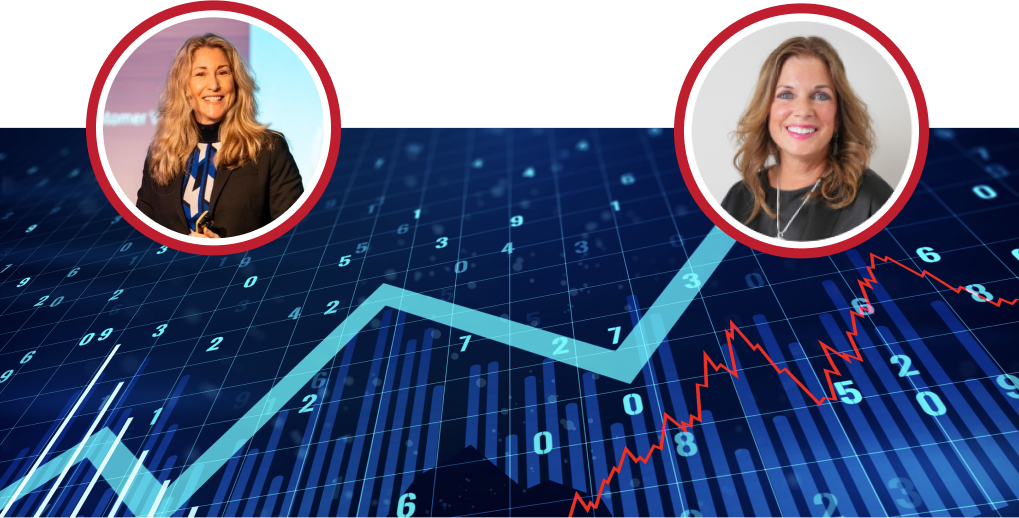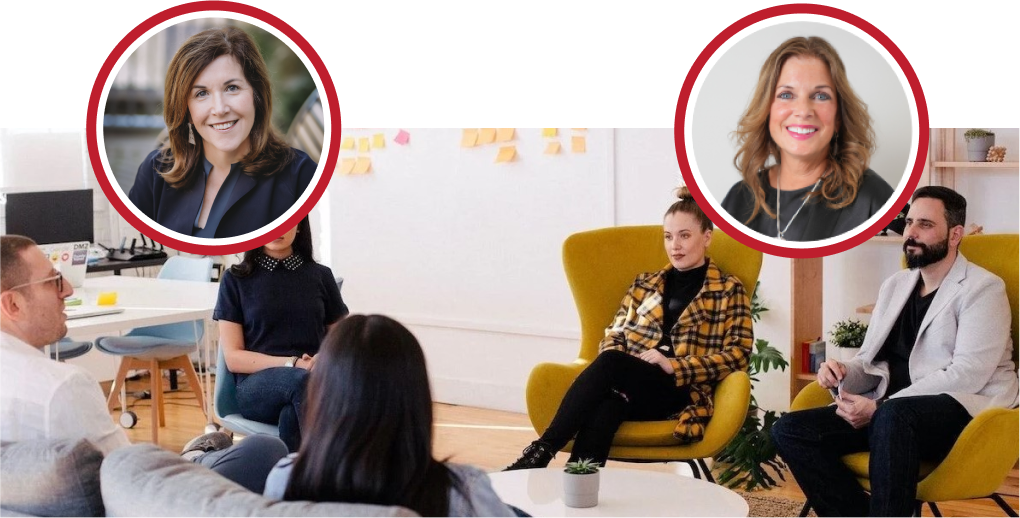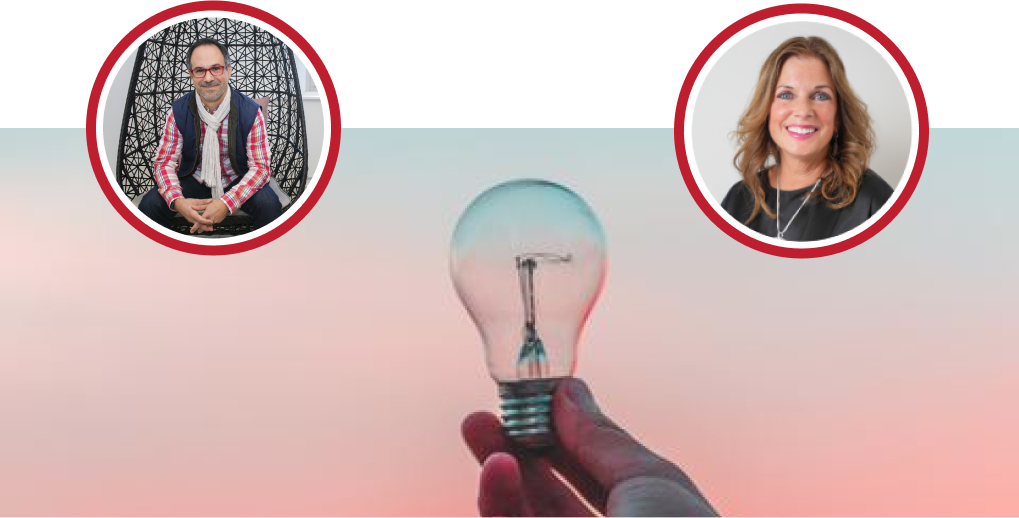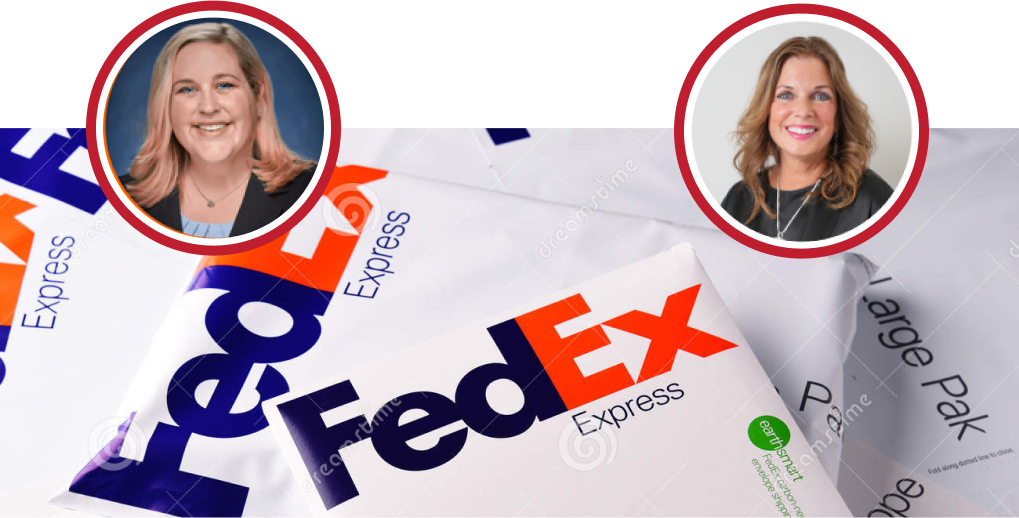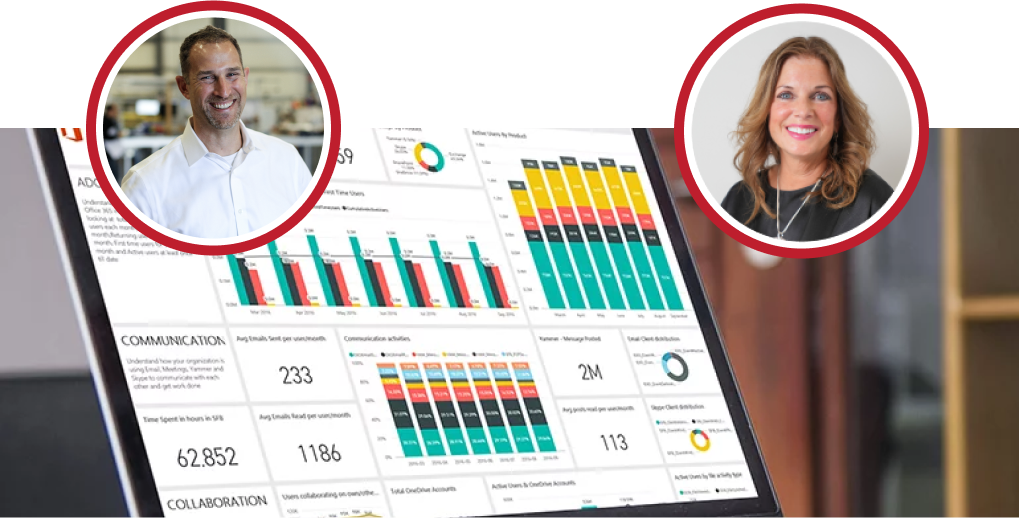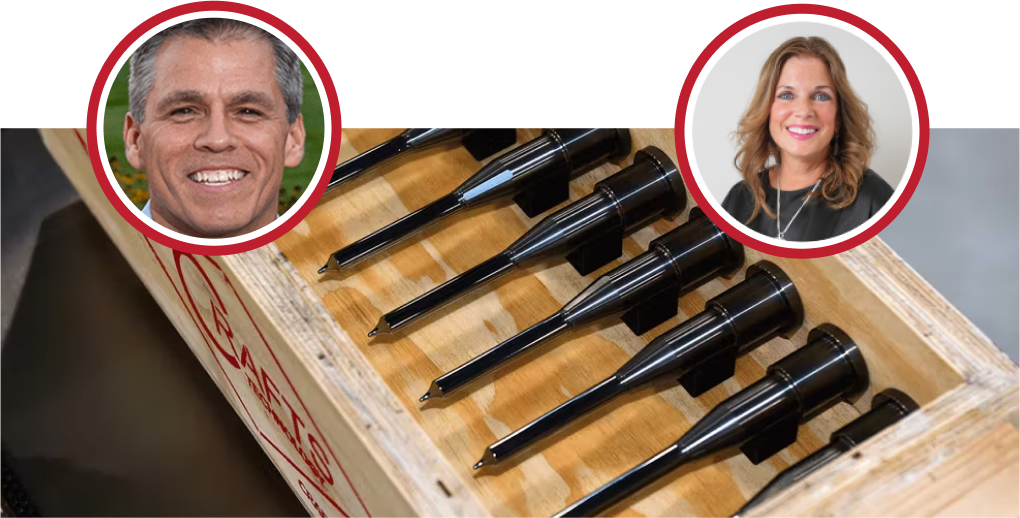Kathy: All right. Welcome to Business As “Un” usual. This is the live stream where we explore the pressing issues and emerging trends shaping the business landscape. We’re going to start in just a couple of minutes, but if you have questions, we want this to be interactive. Please put them in the chat, and I’ll try to get to all of them during today’s session. I’m Kathy Steele, and I’m the CEO of Red Caffeine and your host today. And for those of you unfamiliar with red caffeine, we are a growth consultancy. So, we build and execute grow-to-market plans for ambitious mid-market companies, and our service offering includes a fractional team led by a senior-level marketing leader. That enables a business to scale rapidly without having to hire a wide range of staff members. And so today we are talking about. Well, and as you know, Mary Lynn and I were talking as we were getting ready. I’m just getting back from the Women and Manufacturing Summit in Boston. I’m so, you know, just excited about being there. And as you can imagine, being a manufacturing conference, one of the hot-button topics was workforce and talent strategy. So today, we’re going to talk about key trends shaping the future of work, like the big stay and how to re-engage employees seeking more stability. We’ll discuss the benefits of flexible arrangements like Flex retirement, the impact of AI-driven recruitment, the balance between tech efficiencies and human connection in hiring, and a lot, a lot more. So, let’s jump in. And so, for those of you who follow Business as unusual, you may recognize our guest today. Mary Lynn Fayemi is the CEO of HR Source and Mary Lynn. For those who have not met you before, could you? Just share a little introduction about yourself and your HR source, and then we always love to know what else is not on the bio.
Mary: Sure, Kathy. Thanks again for having me. I love doing these with red caffeine and getting to interact with you and talk about what’s trending in the workplace and people-related issues. But as you mentioned, I am the CEO of HR source. We are an employers association that has been serving Illinois. Businesses for over 126 years have over 1200 member organizations. That comes from a wide array of industries. While our roots are in manufacturing, we serve a diverse array of businesses, including hundreds of libraries, park districts, associations, financial services, and distribution companies. So, our common denominator is employers. Anything that challenges employers or employers who need help that has to do with their employees. HR source is here to help. I have been really honored and privileged to be the CEO of HR Source for 25 years. I lead a team of over 40 professionals, attorneys, trainers, and compensation experts, and we work to help. Employers. Perform better. I know we share that in common. We come at it slightly differently, but we both are in Business to help employers be better and to help supplement their already fantastic teams with members of our teams who can help really energize and boost their effectiveness. What’s not on my resume? I’m kind of an open book, and a lot of people know a lot about me since I’ve been here at HR Source for so many years, but we were on the topic of the conference. You were at this year or this week, actually. And I think what’s not on my resume is that I was a fan of it. And a practitioner of leisure travel even before the term was invented.
Kathy: Which? Ohh, leisure travel means Business and.
Mary: Leisure.
Kathy: OK. Yes, yes.
Mary: So, it’s like if you know you’re going somewhere interesting or even somewhere you’ve never been, or somewhere where you might have friends or other contacts, is to add a little time at the beginning or the end of your trip, or if you have any time. To grab a cup of coffee with someone or go on a local tour. It’s always to make sure that you get to spend a little bit of time enjoying and embracing the destinations that you’re fortunate enough to be able to visit when you’re traveling for Business; there’s, you know, an urban myth or a fantasy out there. That business trip was luxurious and amazing. But for those of us who do a lot of It can be kind of. Awful and hard and tiresome and boring. But if you go into each trip with the mindset of, I’m going to try out a special restaurant, or I’m going to get to see an old college friend, or I’m going to take time out. I was recently in Atlanta, and I realized that as a member of the Morton Arboretum. They have reciprocity with other botanical gardens, so I took a couple of hours out. I took an Uber and went over to the Atlanta Botanical Garden, and it was amazing.
Kathy: Yeah. Well, I wish I would have known that tip years ago. I’ve only personally been doing that the last few years, but you know, I also think that’s an opportunity. I know I belong to not a lot of member organizations that have a national or international presence. So now I’m actually even thinking about, like, who can I, who else I can connect with from a business standpoint. From those association contacts. So, all right. Well, let’s jump in. I. But I love that tip. Thank you so much. Because of Boston, I did take an extra day there, and it was so much fun. So, I mentioned this in the intro, and we talked about it when we were prepping for this a few weeks back. But the big thing is that it’s kind of a non-sexy version of what was going on a few years ago with the great resignation. And so given that so many employees are really. Adapting to stay in the roles that they’re in, you know, it’s an evolving economy. We’ve got the election coming up. So, how are organizations re-engaging these employees? They may be staying, but they may not be as engaged as you’d want them to be.
Mary: Right. So, the big stay isn’t quite as newsworthy or as sexy as the great resignation was, which just dominated headlines for a long, long time. The great state is really, I believe, an outgrowth of the fact that a lot of employees decided to leave. Even Job hopping to get a little more flexibility or a little more money in their paycheck didn’t always end up with higher satisfaction. A better work-life balance or even joining organizations. Really fulfilled their promises of being a better fit for them. And so, I think as the job market has become more stable, unemployment has kind of levelled out. The opportunities to make a jump and get a big bump in pay. They are also not quite as plentiful. Many employees have said you know what? It might not be that bad where I’m at, I’m going to re-engage, I’m going to recommit. I’m going to see what opportunities my employer has to put additional training or upskilling opportunities into me to see what promotional opportunities might be available, what other types of interesting projects I might be able to get involved in, and so in their annual performance appraisals or discussions as well as hopefully more regular. Check-ins, feedback sessions, or one-on-ones with their leadership, their managers, or their supervisors. They’re having these conversations. They’re asking their employer, you know, What’s? Why should I stick around, as you know? Do you have opportunities, and why should I stay? And if I do stay, what can we work on to make it worthwhile for me?
Kathy: Yeah, yeah, I like that. I think, you know, I do feel like there’s still, you know, that onus on employers to be looking at their learning and development program constantly. Their growth patching strategies make sure people understand, even with smaller organizations, that there is forward momentum. But even, you know, leaning into your benefits and so you know, it’s just always interesting how underutilized some of our benefits programs are. Just because they’re vast and we don’t always know what’s what, you know, what is in it for me and our benefits strategy, so I love that, you know, employees are asking those questions and think employers should be really making a case for some of the things that they’re doing more frequently in their communications with their employees.
Mary: I couldn’t agree more, Kathy. And if employees aren’t asking, you know, why aren’t they asking? So again, raise the discussion. Put out communications in various ways, whether it’s in your, you know, monthly town hall meeting or in e-mail communications. Are you putting your benefit providers up in front of your team members so that employees know what’s even available? We recently did a benefits survey and a benefit satisfaction survey. But we also asked our team members, you know, not only what you like and what you value here, but what would, what would you be interested in? What should we be researching in terms of additions to our benefits program for employers? And employees, it’s a two-way communication. So, if employees aren’t asking, you might also need to start the discussion or put out some interesting information that might alert people to the fact that there are benefits. They’re not taking advantage of and also, as an employer, opening up that opportunity for employees to make suggestions on what might be more meaningful or valuable to them.
Kathy: Yeah, I Love it. I think you know as your employee population changes. Is there what you know they want in their career or as well as their, you know, work experience changes and so, you know, being able to use things like, we always recommend some of the benchmarking surveys that you can do in the, you know, competing for best places to work. Recognition. It’s not just about winning those kinds of awards; it’s about what you can learn about what others are doing in the marketplace. About the benefits and perks that they’re giving to employees, I think you know there are some really addictive things you can add as an employer.
Mary: Right. As your population changes, their desires also change right from making sure that the benefits plan that you currently have in place is meeting the needs, not only of today’s employees.
Kathy: Right, exactly.
Mary: But also who you’re trying to attract?
Kathy: Exactly, exactly. So. All right, well, let you know that there’s been some interesting workforce change. Ends, and you know, I always love these buzzwords like flex retirement, which is amazing. I love the concept of this because I think this has been a market gap for a while. People are investing 2 into benefits programs that include Wellness, and then you know. De And I like what’s going on with all the backlash, I heard a lot of great stories about women in manufacturing about, you know, the programs that people were putting in. Ways, but I’m also hearing their management-level riffs going on right now. So, like, there’s a lot, even though the big stay is a thing, there’s a lot of things going on in the marketplace. Talk about a little bit about. What you’re seeing?
Mary: Wow, we could do an hour-long session on each of those topics. They’re all very rich, and some of them are quite politically charged. And we are here, as you mentioned, in an election year with a lot of things happening and a lot of issues kind of being bantered about, which makes it a bit of a challenging environment. I keep calling the election just one of the many headwinds we’re facing. Because there’s quite a bit of uncertainty, and people are kind of in a wait-and-see mode about not only how the outcome of the election might impact legislation and cases and what is going to be the situation we’re faced with in the years ahead. So. Let me just. Pick out a few of the things you mentioned. Yes. Whoa. Well, I’d love flex retirement love that topic. Big fan.
Kathy: OK, I know I kind of threw. A few crystals, right? But
Mary: In an environment like we have where there is a challenge to fill our roles. With qualified individuals, what is better than being able to retain some of our knowledge workers? Some of our long-term? Team members who have great industry backgrounds can help mentor and train our newer employees who still have. Active minds and active bodies want to contribute and can really help us in this transition. I think flex retirement if. Organizations can find ways to do it, and what’s so cool is that there is no one-size-fits-all, right? There are so many variations on a theme. HR source has been taking advantage of Flex retirement for decades already. In our fractional team, we Get the benefit of the season. And dedicated, brilliant team members who are either seasonally wanting to work or just wanting to work all year long. But part time we might be able to pick and choose the types of projects they work on. They can choose whether or not they want to work 100% remotely, whether or not they.
Kathy: Now. Right.
Mary: We are willing to still go on site and work on HR projects at our member organizations, so organizations that are willing. To consider the options available that might fall under that broad heading and flex tirement are going to be glad they did. It’s such a, you know, it’s a wonderful opportunity for both employees, both people like me who are. You know, aging and wanting to keep working for many years, but not necessarily in a full-time traditional role If you can take advantage of it. You are going to be in a great position to retain qualified team members and be the beneficiary of it. So are your customers or clients.
Kathy: Yeah, I love the idea. I also, you know, just can’t imagine not working. So I think it is just brilliant. I’m glad there’s a label so it makes it kind of simplified to understand it, and I, I think. You know, it really will serve a gap in our marketplace and bring that tribal knowledge and give somebody a long tail succession strategy so that you could really mentor a role that you’re trying to backfill for over, you know, a longer way longer time frame than a two-week plan for somebody to. Eggs at the Business, so it is; it seems extremely advantageous. What about, you know, some of the things that you’re seeing from, like, what? What else can you tell me about that? Topic Wellness riffs.
Mary: Yes, yes. So we definitely are seeing an uptick in risks and reductions in force. I think you know, obviously, while the economy, you know, for many years, it’s been an employee market. I think many organizations either held on to and or hired and budgetarily are struggling to continue to have as large of a workforce. So they’re looking much more closely at headcount, and they’re making some performance-based decisions. You know what, employees are pulling their weight and are improving the Organization. And so I mean this is something we like to take a look at closely. I think it’s a leading indicator. I don’t want to. You know, ring the alarm bells because I don’t think those are necessary yet. I think the riffs that are happening. Are. Strategic in nature, currently, they’re not broad brush huge you. Know some of them. They are newsworthy when they’re at big, big organizations, but I see a lot of them happening. At small to medium-sized organizations, for small groups of employees, they’re not broad-brush decisions; they’re very particular based on success. In any given department, any given division, or geographic location, as well as the employee’s performance. So I think they are happening. We’ve been seeing an uptick over the past several months.
Kathy: Yeah, I just, I felt like you know. And it’s super anecdotal because I don’t have the marketplace data that you have access to, but I definitely feel like there was. A lot of older or, you know, management level people that were just, you know, blindsided, you know, people that I do not work with or know personally, and it’s just it’s been a little concerning. Do you believe that there’s any kind of ageism going on right now in terms of recruiting and retaining?
Mary: Yeah, there’s no question about that. More senior and older employees. So I mean senior also in terms of years of experience.
Kathy: Yeah.
Mary: As well as age having and they have for decades. This is not a new phenomenon, but it has been. It is.
Kathy: OK.
Mary: I think it’s more widely known these days. More widely experienced than it takes. More senior and experienced, as well as older individuals much longer. And it’s much more challenging to find Job of equal or higher pay and prestige. It is a challenging marketplace, fortunately.
Kathy: OK.
Mary: The gig economy and the opportunities for fractional work have helped many of these seasoned professionals find alternatives. Ways to make money and to still have interesting work. Unfortunately, they don’t always come. They most usually don’t come with the same sort of benefits packages as the additional employment model has, so that can be tough if you don’t have a partner who has access to benefits I hear over and over again for many job seekers as well as those who are fully employed. Benefits speak more loudly than base pay. The need for health insurance and access You know, two 401K plans are often more pressing and of higher priority than what the base pay for any given position is.
Kathy: Yeah, I feel like it’s so evolved. I mean, when you’re getting asked about your benefits in interviews, I cannot remember that 15 years ago it was so different in terms of what I think that, you know, employees are way more educated on.
Kathy: What to ask for? Prime what total compensation and perks can look like in the organizations, too? So kudos to them for really better understanding that, and I think it’s great for employers, too, because some of those of us do provide really strong benefits for people. We want people to understand that you’re getting compensated well beyond your base salary with all of these additional things that we do. So, alright. Well, let me switch gears and talk about the topic that we’re always talking about: artificial intelligence. So, like, I feel like there’s not a conversation. I’m doing a size AI thing later today. I’m like, what in the world is it? It’s just infiltrating every conversation. And it’s also finding its way into our recruiting and, you know, in both on the candidate side as well as the employer side. So, talk a little bit about what you’re seeing in AI utilization. Then.
Mary: So I’ll start with the employer side. Employers have been harnessing the power of AI in the recruitment arena for some time, and I think that is A wonderful use of AI. You know, a lot of the tools we use with applicant tracking. You know, even the writing of job descriptions and job posts, there are just so many ways to harness AI. A way to get a first draft, I would still. In really, really enforced that, I believe that employers need to be editing and scrutinizing what AI provides them. As a draft, I find that people who don’t spend the time editing what comes out of the initial. AI requests are often obvious to the naked eye. A lot of the same advice is going to go on the employee side, so employers have a lot of access to AI. I encourage employers. To allow their employees to use it and to share specific cases and use applications with their team members right to benefit from it and to share best practices. Certainly to be concerned about the legal implications of as well, the eyes wide open about how. We use it. From an applicant’s point of view, AI is also very helpful in drafting your resume or drafting of cover letters. Helping to practice responses to interview questions. Again, make sure that it is authentic, genuine, true, truthful and that you are not over. Stating your skill sets experience, I mean, as I think we’ve talked about on one of these sessions before, it’s pretty concerning when you hear what the rate of falsification of resumes and applications was in the past. I think I heard as high as 2/3. Had some sort of. You know, boasting of skills or experiences that weren’t true or overstating education, you know? Only put the years they work for an employer to try to skim by. Maybe they were only there a few months to February of the next, but they use the years instead of the months.
Kathy: OK.
Mary: All of those things can be amplified by the use of AI, right? If you were a halfway decent writer describing your experiences at a prior job. You could have made yourself look pretty good with the help of AI. You can make yourself look amazing. And so the onus then is on the employer to really. Figure out if the person is everything they’ve made themselves out to be through a really effective pre-screening process, which usually still involves a phone screen. It might involve a video pre screen like this, but then also I’ve heard a lot of employers.
Kathy: Yeah.
Mary: Say they’ve gone back to in-person interviews because they’ve been duped one too many times. They were finding that their applicants had some other either their phone or another source, and during a live interview, we’re having a virtual interview like this. Reading answers very discreetly that we’re not. Their own, and so the use of AI.
Kathy: Wow.
Mary: I can have kind of an ugly underbelly. I think that many employers are concerned about not just the resume side but also the interview situation. So isn’t it?
Kathy: Interesting. Yeah, I hadn’t thought of that.
Mary: Interesting slash scary is there. Yeah.
Kathy: Any that you know to me is lying. But I feel like it’s to you. Back to your point around sharing ideas and sharing case use cases or costs with your team, I think it is really important for employers to do this. I wouldn’t say mandate rules around AI usage, but I do think you have to sort of think about how you’re using AI and have some dos and don’ts. You know, I think we are going to get into a place where there are a lot more corporate policies around utilization and the disclosure of using AI and. How, you know, I wonder if it will creep its way into having to disclose certain things within the interview process. If you could even outright ask people that you know, was there any use of AI technology and creating that cover leather because it was so incredible? You know, connected to our job position, those are the things that I feel are challenging for a candidate to do if they’re applying for lots of different roles; maybe they may have a broad-based skill set using AI to make it more resident with a particular role seems so effective to me. But I do feel like there’s going to be. Just some some. Legality that we’re going to all be looking at long term in this space.
Mary: I 100% agree. I think a lot of organizations are already putting some policy guidelines into place and sharing those either with their employees only or with their clients or customers. We’re starting to get more and more. Feedback from our Members, for example, in some of our video meetings. People were turning on AI, note takers and other members were complaining that they weren’t comfortable because they thought they were coming to a meeting that was incompetent.
Kathy: Hi there.
Mary: Yes. So I agree with you. This is kind of the wild Wild West and we are just starting to scratch the surface of all of not just the practical implications and the practical uses, but also the. Lists that are going to keep playing themselves out in the years to come. I thought we might talk a little bit about, you know, the headline-catching. Concerns about AI taking everyone’s jobs? Yeah, which they, I think, for the most part, certainly there are many jobs that AI is going to help supplement, augment support. Make it easier. I don’t think AI in and of itself is going to be a big killer of jobs. I think smart individuals, savvy individuals in all sorts of professions are going to need to use and are already needing to use AI to make themselves more effective. And keep themselves competitive.
Kathy: Yeah, I couldn’t agree more. I mean, what I and I might even be less than this. But when I talk about it, you know. Upscaling and that I am saying to people now that if you’re not going to leave the workforce and then like the next three years, you better get on that bus because everyone else is using AI. And so that to be able to, you know, just know more about the tools, you know, know where they can. Have been effective. I mean, I am a technology lover. I’ve always loved things that automate administrative tasks. I’ve been using those types too. Throughout my entire career, so yes, and more of those things, but it doesn’t like to take away the need from people to actually use that information and do the thinking part of it, you know, to really do their Job better. So I couldn’t agree with you more that we’re going to see. A lot more utilization and expectation around AI in job positions and and and and. In terms of our recruiting practices, we’ll be asking about the uses of those technologies.
Mary: And I would say that what are your points? Sorry to interrupt.
Kathy: Oh, no worries.
Mary: No, I don’t think there’s anything wrong with asking an applicant. Did you use AI? Did you use AI, and did you use it to help with your resume or cover letter? There’s nothing illegal, and you know, I always recommend you ask the same questions of all of your candidates. So, if you want to incorporate that, I can’t see any legal reason you couldn’t. So, a couple of tips. I would leave people with ours. Make sure that if you’re concerned, find ways to test, like if there’s something in a resume that seems too good to be true, I would have said this. Whether or not AI was around the probe, ask right what you think a job looks like. There’s no way they can increase sales by 500%. Ask for examples, right? Dig into the data they’ve given you. You didn’t make this stuff up. As the employer, they gave you this information. Another tip would be if your Organization isn’t already talking about AI, make it a topic of conversation in management meetings. Ask people how they’re using it. Ask people to share. Don’t make people feel like they have to keep it a secret. Socialize it, talk about it, learn from it. Admit to mistakes. Admit what you don’t know and what you’re still learning. Share best practices.
Kathy: Yeah. And I, yeah, I mean, I just like, from a growth standpoint, I think every Organization should have an AR component to their strategy for 2025. I mean, it’s going to be part of my Organization. I really, you know, encourage others to think about, you know, across your entire company, where can you be? Using these performance-enhancing tools and having people come up with the ways they want things they want to make more efficient and, then, sharing their experiences on using these tools across the team. So, on the last note, are there any thoughts about it? Too much automation, too much reliance on technology. We don’t want our candidates to feel like it is a fully automated hiring process. I mean, it’s cool to order food virtually without interacting with people. I’m OK with the robot delivering me my meal. But like, do we want to? Our candidates feel like there’s no human connection in the recruiting process.
Mary: We definitely want to keep the human and human resources, so I would highly recommend finding ways I mean. Everything we’re reading is that people are missing the human connection. Look at the conference you just got on a plane to go to in Boston since the pandemic. And since we reinstituted in-person conferences, every one of our conferences sells out and are live sessions here at HR source. The rooms are filled. People miss the human connection. We’ve learned people do better. Heads down, independent work in the comfort of their home or their travel trailer, or in a hotel on the road somewhere private and quiet. But the collaboration and the opportunity to interact with others. Learn from others and be mentored. Making human connections is alive and kicking, and people are looking for it, so that’s why I said so many of our employers had gone back to in-person interviews, especially if you have an environment where people are going to be in front of your clients or members, or they’re going to be interacting with it. The team invites them in. Break bread, right? Get people together. So definitely find a way to make human connections, whether it’s it can start virtually. Mean. Applicant pools are larger than ever. First of all, thanks to technology, and second of all. Darn it with technology, because sometimes we’re just getting inundated with applications, so many of them are not even from. Candidates who would ever be considered for a host of reasons, so you know we can’t be having in-person interviews with everyone who submits or applies for a job. But once you pull your list down.
Kathy: Right.
Mary: Make time to meet up with people in person and to get to know them. I think we can avoid a lot of hiring mistakes if we go back to that old-school methodology and prepare individually for interviews, right? And really think about taking time to read their cover letter and. Ask personal questions related to the Job at hand to try to get them to express examples that relate to the Job you’re hiring for. Right. So.
Kathy: No, I didn’t. You know, like those chemistry conversations by having lunch. And I agree it’s not probably. I. Feasible to do everything in person, but if there’s an opportunity to have an in-person element to your hiring process, I couldn’t agree more. Well, as we’re on the topic of technology, let’s talk about some of the analytics that we’re using in, you know, HR. So it’s really transforming decision-making. So, what are some of the things that you’re seeing smaller mid-market companies leverage in terms of these true analytical technologies?
Mary: Right. So, there are just so many HR metrics that are easier than ever to measure because of the help of technology, right? And so I think it’s important while the list of potential metrics is long. Get behind the numbers, so I’ll name some metrics so time to fill costs of higher turnover rate, absenteeism rate, and cost of benefits. Or just just a few. And then there are the more positive ones, like employee engagement, employee satisfaction, and performance ratings.
Kathy: Right.
Mary: What is more important than the measurement itself is what is behind the number. So, let’s use turnover as an example. Is your turnover rate high? Because you have let a lot of people go. Or is it high because the people you’re hiring are leaving shortly after they’re hired? Who are you losing? Is it in a particular department? People who work for a particular supervisor? Is it in a particular area of the country? Is it? Early team members are, you know, are you losing people in the first two years of employment, or are you losing people after they’ve been with you 10 years? So shine a light, keep going down a low level. Yeah. And to look at what the information means. Same thing with time to fill. That’s kind of a popular HR Metric. But that can be a way to look at whether or not your HR processes are efficient and effective, not necessarily what the quality of the candidates is. Because I’ve worked with many members, they get an amazing array of candidates, but their internal systems. They are not very strong, and so they’re losing good candidates along the way. So time to fill might be extremely high. Not because it takes forever to find a good candidate but because it takes them forever to interview a candidate and get the hiring decision made to get an offer on the table. So. What do the numbers mean? Take a look behind the curtain, delve down several levels and keep asking why. Why is this number what it is? What here could use improvement? What does this say about our systems and processes? How can we do better?
Kathy: Yeah, I love that. I think that you know. For any process in your Organization, we look at that same kind of strategy when we’re looking at sales and are at the top of the funnel, or are we not closing at the rate that we, you know, used to close that? So I love that application of real use cases around some of the analysis that you can get from these tools because. It is pretty. It is really pretty compelling. The information we can, but it’s honestly no good unless we’re doing something with it. So, all right, let’s talk about one of the perks of being an HR source member: your HR source community. I loved it like I hadn’t done this before. I go to this community. I’m more of a watcher than I am a participant, but I do want to talk about some of the things that came up. Recently, because I think this always gives me a pulse of what is, you know, what’s on the minds of the market. So financial transparency and employee engagement, what? What do you see? I mean, I love, I believe in financial transparency. So it’s been something in my Organization since the very beginning, but. What else? What? Are you seeing other employers do this?
Mary: I think employees are increasingly wanting to understand their Organization’s finances. I mean, we live in a world where transparency is a hot topic. Sick, and I think our younger employees are also much more bold about asking questions.
Kathy: There are. You’re, you’re dead on.
Mary: Right, that’s not a bad thing. And so. What? I get concerned about the fact that employers sometimes just do a data dump, and they don’t provide much context, so I love pairing financial transparency with appropriate education and information. I’m going to use the same term I used before but get behind the numbers. Just the numbers on their face might not be that meaningful to your employees, but breaking it down and helping them understand what they mean to leadership, for example, I report to a board of directors. Others and we share a lot of metrics with our board that then I also share with our team. But to help our team understand what our board is looking for, what types of tough questions they ask us, and what we have to report on for them to feel comfortable that our Organization is in a healthy place. And that we’re spending money in the right places and that we’re fiscally sound and healthy, explaining that to our team members, talking about the metrics that mean a lot to our leadership. Yep, helps them understand, and then having an open door, not everyone is comfortable raising their hand in a group meeting and saying, you know, I don’t really understand this. I never took a business accounting class. I don’t have an MBA, Help me explain. Revenues versus expenses: what a surplus means and what a profit margin is. This means you know and are not making any questions off-limits. Having it be right, no question is a bad question. We’re here to help you understand. Our controller is very available to answer questions. People know that they can ask me questions. I’m also happy to admit when I don’t know. Something I’m still trying to learn and what I’ve benchmarked with my peers, what types of metrics our industry group is looking at as a whole, and what they mean. Financial transparency, I think, is good for organizations. It’s good for leaders. It also really helps our employees understand and have a line of sight to where they can contribute to the Organization’s success.
Kathy: Yeah, I couldn’t. I mean, I believe in that financial literacy training, I really. We do, you know, like we’ve been doing it for a long time and I do see there’s a variety of perspectives from our employee population around what they care about in terms of numbers. We’ve definitely, you know, worked on and tweaked the way the information we’re presenting, trying to keep it, you know, minimal. So it’s not. Super overwhelming and such, but to your point, I, y, you know, in creating financial awareness around how the Business operates, I mean it’s critically important for us as a growth consultant. Because we are accountable for the dollars we’re spending on behalf of our clients, we want our employees to understand that. But I also know that you know. This can be. Very meaningful information in your personal financial situation, and I’ve heard from many people who have worked for me or people that a great game is really where I am. You know, learn more about financial transparency, a great game of Business. For those of you that have not ever heard of it, they, it’s all about you. Bringing your team around financial literacy and transparency, but I feel like those stories yo, you know, really help me better understand how to manage my finances as a person. For the first time on my own, not living with my parents. But I’ve also, you know, had employees. Leave me to start their own. You know, their own gig or their own company. And you know, having that understanding of. Of all the elements of running a business, especially the financial elements that keep you open are critically important tools. As you think about, you know, different options you have in your career. So I think it’s got so many benefits. What about salary? I mean there, we don’t share salaries; we share pay bands, but what are people doing in terms of salary? And transparency, I know there’s more onus on organizations to be putting out salary bands and their recruiting processes. What’s what? OR what are you thinking about there?
Mary: Well, I’m thinking Illinois employers, if they’re not already thinking about it, they better because in January, it’s going to be the law in Illinois that in our job postings, we have to include salary information as well as benefits information. That does not mean we need to make it available to everyone in our Organization. Every single person’s salary and benefits. But when we post a job, the salary and benefits for that Job and it can be a band or a rank. Have to be in the posting per. Illinois law. So.
Kathy: It’s just for Illinois, like, how many?
Mary: It’s a state-by-state law, so some states already have this law. Many employers that are national or are doing recruitment nationally have already implemented this. Others have implemented it as a best practice even when it wasn’t the law. So, laws like this are sweeping the nation.
Kathy: OK.
Mary: So, they’re making their way around the states. I think Illinois might have been. In the teens, somewhere in terms of adopting it. So, for organizations who haven’t read anything about it or don’t know anything about it, just go to hr source.org, and you can Google or, in the search box, put trip pay transparency in Illinois, and you’ll find plenty of articles.
Kathy: OK.
Mary: About it to help guide you and give you more specific information, but. I think it’s helpful for employers. It should narrow the number of applicants that apply and help organizations avoid or at least minimize. Avoid. This might be my optimistic viewpoint, but minimize the number of applicants. Who is way above? The salary range. It won’t stop people from applying if they’re way below it, but this is hopefully the intention is certainly to provide more pay transparency as well as more equity to try to try to.
Kathy: Right.
Mary: Close the gap on some of the pay discrepancies we have between genders between people of different races and ethnicities. So. Its time has come, and it’ll be the law of this state very shortly. So employers have to make themselves aware of it and figure out how they’re going to adapt their practices and get ready because some employers admittedly aren’t very formal about setting the pay rate. Until applications start coming in. And they kind of wing it when the time comes for negotiations. So this will require more work upfront and, hopefully, result in more consistency and more pay equity.
Kathy: Right. Yeah. And I think that it just again, you know, going back to technology, there are a lot of resources out there that can help you establish your pay ranges based on benchmarking data across the US, depending on where you’re hiring. And I know you guys do some HR benchmarking Or salary benchmarking. Industry associations tend to have that information, so there’s. A lot of sources. You can lean into finding that pay data. Was there anything else from a legislative or economic change that you think we should have on our minds as we’re kind of on that topic?
Mary: Yeah. So, Illinois, I always joke that Governor Pritzker has had a very busy pen the last few years. So there’s a lot in Illinois and I know we have an even broader audience than Illinois, but a lot has been happening at the state and local level. Illinois and Chicago employers have been struggling with these new paid leave laws that went into effect this year that stressed a lot of employers out. I think some of the payroll. Or. Riders weren’t necessarily as quick as we had hoped with figuring out ways to help employers make this easy. We’re also waiting for the courts on some other big issues like the Fair Labor Standards Act; the second big bump in the minimum salary threshold is supposed to happen in January. The courts could, at the last minute, change what we’re waiting for. What’s going to happen with non competitive agreement? That’s still kind of hung up in the courts, so a lot is happening. I know a lot of employers are also. You mentioned DE, and before you know it, there are a lot of employers that have. Changed their stance and, have you know, terminated their director of VP of DE and me. That’s getting a lot of press. So, there’s some talk about whether or not affirmative action for government contractors, anything is going to change with those requirements. So, there are a whole host of issues. Both at a state. The local, I should say more than both at a state, local, and federal level, that employers just need to keep their eyes wide open about a lot of things that are in a holding pattern because of this election. And so wait and see. I know we’ll meet again in 2025 and hopefully have another one of these sessions, and maybe we could even have one where we talk specifically about employment law issues for employers; there are also some. New laws are out there regarding temporary workers and how they need to be compensated. That’s a tough one for many employers. The list goes on and on, Kathy.
Kathy: Yeah. So this is, you know, and it is, and you don’t want those things to sneak up on you. I know I’ve known a number of them. Employers that have, really. Been caught off guard and had to face some really stiff penalties in terms of making sure that they were. Compensating for some of the mistakes they’ve made in their hiring, hiring, or employment practices. So, all right, I’m going back to the HR source community for a minute. There, we talked about employee well-being, and there was a concept of glimmers. Can you talk about that for a minute? I love that.
Mary: Yeah, so I stumbled. Cross this term glimmers online, and it is the opposite of triggers, so triggers have been getting a lot of press with people’s concerns with mental health. Health with some of the DENI issues, with the return to work controversy or return to the office, many things are triggering, and triggers are a real thing. I’m not downplaying at all. The reality of triggers and what they can do to a human being. In terms of their mental health and productivity, a glimmer is a positive. It is something that happens in your day. You can either. Go looking for it and cause it to happen, or make it happen or choose it to happen, or it can happen organically. So I remember several years ago, I was in a Starbucks drive-through, and I drove up, and the barista told me someone had paid for it. My order. Glimmer a glimmer, right? Or. You decide during the work day to just go outside for a few minutes. Close your eyes. Take a few deep breaths, or you turn on the radio, and they’re interviewing your favorite author, or you decide on your coffee break to call an old friend that you haven’t talked to for a long time. There are so many ways to find glimmers for yourself. That helps you to have a better day to pick up your mood or to get you out of a funk. But there are also. Thousands of ways that you can give other people glimmers, complimenting them, saying wow, do you have a new haircut that looks so great on you asking about their kids, to complimenting them on a job well done. There are so many ways to. Give yourself glimmers and give them to others in this world where there is so much stress and controversy. News that’s hard to hear and take in glimmers is just a wonderful way to boost your spirit and boost the spirit of others. Both you work with as well as strangers.
Kathy: Yeah. No, I, I, I love this topic and I think you know for me, I got up this morning and played some cardio tennis because I haven’t really had a chance to do that in a few weeks with lots of travel and. I wanted to mention, like you mentioned something similar, but we had a client celebrating its 100th anniversary, and they did 100 random acts of kindness, and they gave their team the ability to go and buy somebody’s gas, or you know, it was just so heartwarming to hear some of the stories, that of things that their team did with those. 100 random acts of kindness. Alright, well, you know we are getting down to the wire. Share a couple of rapid thoughts on what people should be thinking about for 2025.
Mary: So, all 21 are tough, and then one is fun. The tough one is that there is so much going on. You cannot put your head in the sand in the post-election period. It might be a little crazy for a whole host of reasons, but entering 2025, you have got to keep your finger on the pulse.
Kathy: OK.
Mary: Of all of these, employment law changes and makes sure that you comply. You mentioned a client before it or more than one client that was caught unaware. The penalties are unpleasant, so make sure that if you’re not able to do it yourself, you have someone on your team who’s staying on top of all of the things that are happening in the employment arena because it is a lot and it’s not going to lighten up anytime soon. So that’s the tough one. That’s the homework. The +1 is counter that with some glimmers; give yourself glimmers and give other glimmers. We have been blessed with this gorgeous fall weather; get out and take a walk. Buy yourself a pumpkin spice latte, and light a candle at night. Watch The Golden Bachelorette.
Kathy: Yeah.
Mary: I don’t know, do anything to make yourself feel better, you know? Go on a walk with a colleague. Call someone out of the blue and compliment them. Send a donation to the folks who are suffering in North Carolina or Florida after these devastating hurricanes. Give glimmers, and then also give yourself the gift of a glimmer to stay positive in the light of all of the things we’re facing, both personally and in the workplace.
Kathy: Oh. I love that. Thank you so much. Alright. Well, Parker, can you bring up how people, if they want to get in touch with Marilyn? If you’ve got questions, this is how you can reach out to Marilyn. I encourage you to visit the HR source website. There’s tons of information on that site and becoming a member organization like we are is. Really, really valuable. We definitely have taken advantage of lots beyond just their resources. Center, I also want to also you know. Thank you, Mary Lynn, for sponsoring Business as Unusual. We really love our partnership with you, but we also have another sponsor, M3 Learning, and they are, you know, creating sales superstars through their training and coaching services. And. Next month, we are going to be featuring a really kind of fun and exciting topic about how to use info skills to improve your sales and marketing strategies. And so we’re going to talk a little bit about why improv is just a powerful tool to use in Business. I think there are so many different applications we’re going to be talking a lot about. How to use it to allow you to think more spontaneously and when things get thrown at you like curveballs, we’re going to showcase some of the ways that sales teams are using improv to really create this more ensemble experience. Everyone in the room has a role, and it doesn’t. You know, there’s not one solo artist in the conversation. You’re really effectively showcasing your team through those skill sets. And then Tom later, Ray from M3 Learning will be on the hat seats. We’re going to do some interactive improv exercises so you can come in and cheer us on. But as we wrap up, I really hope everyone took something away from what we were talking about today. And you’ve got some new things to be thinking about in your talent. Strategy and plan for 2025. I want to thank my guests. Mary Lynn, thank you so much again for sharing your experience. If you have any more questions about how to use these ideas as part of your growth strategy, please feel free to reach out, reach out to me or any of us at Red Keith Caffeine. Mary Lynn, I can’t wait to talk about this with you and some of the things that we’re seeing early next year in the 2025 schedule. Until next time, let’s continue to challenge the usual, and I’ll see you all back here in November.
Mary: Thanks, Kathy. Thanks, everyone.
